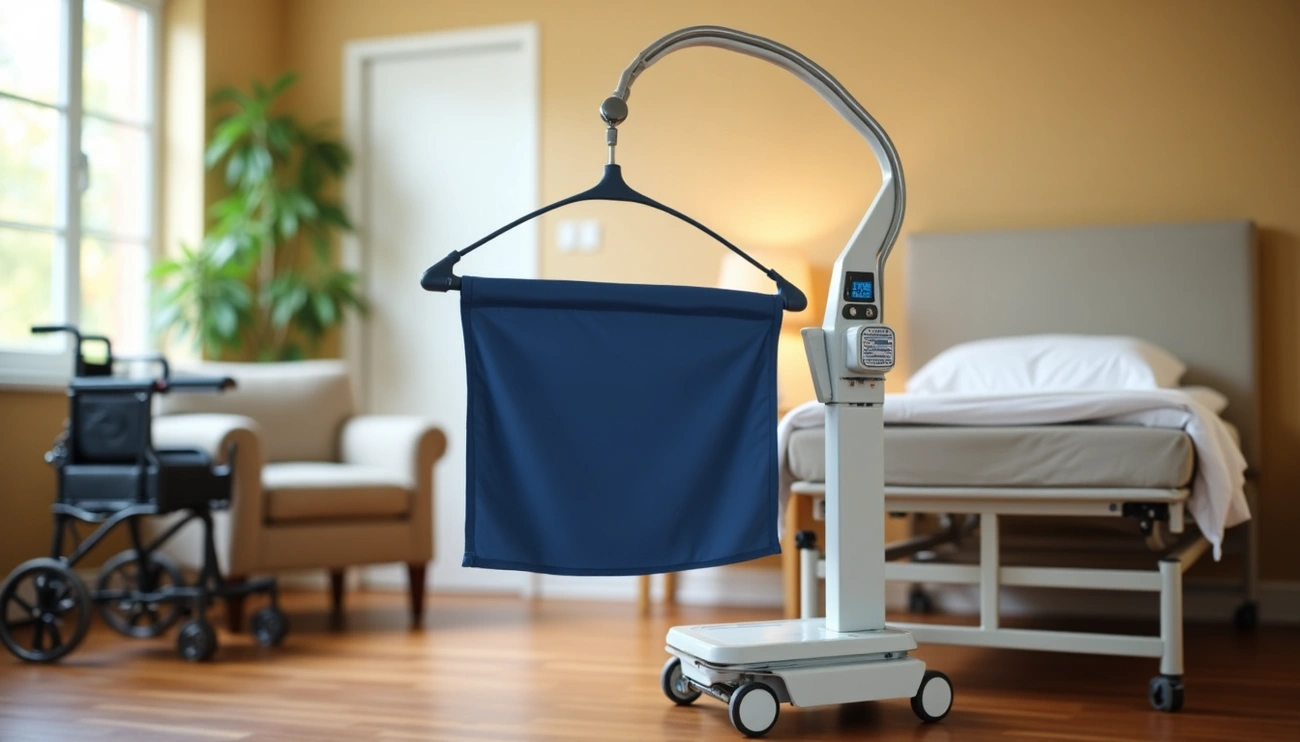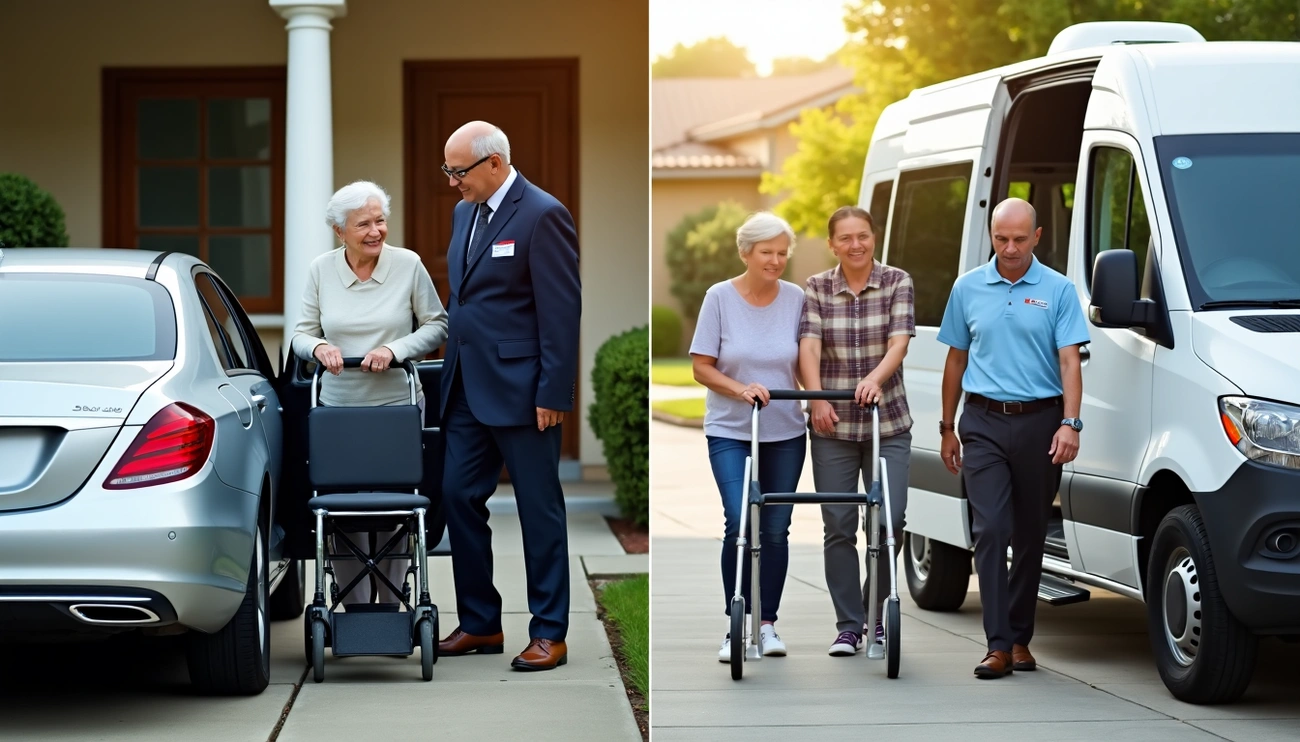Stretching can help senior citizens address many common symptoms of aging; building flexibility can help prevent tight muscles and joint pain while maintaining the range of motion needed to complete the daily activities of an active lifestyle. Combining static and dynamic stretches with regular exercises for strength training and balance exercises can also provide additional health benefits, promoting good posture and lowering the serious risk of injury. Even with limited mobility or flexibility, starting with simple stretches can help build the flexibility needed to stay healthy and active. Adding a regular stretching program to your daily routine is a great way to start exploring your flexibility and finding relief for aches and pains. When possible, have a friend or family member help you to prevent injury and check in with your doctor before starting any new fitness regimen, even for simple exercises.
1. Overhead Stretch
The first exercise is a gentle stretch that can be performed in a seated position, perfect for older adults looking to build flexibility with a limited risk of falls or injury. As with any chair exercise, having a sturdy base is important to both your stretch and your safety. Sitting up tall, place your hands out to your sides with your arms straight so that they aren’t touching the chair, and slowly raise your arms to stay over your head. Keep your hands facing parallel to each other and separated wide above your head, holding for about fifteen seconds and then releasing with control to the starting position. Over time, you can work towards longer holds or more repetitions of the stretch, but always consult your doctor or physical therapist when adding new physical activities to your routine to prevent serious injury.
2. Shoulder Stretch
Stretching the shoulders can find extension through the upper back and shoulder blades, improving posture and easing joint pain through the upper back body. To begin, reach the arms parallel and straight out in front of you, in line with the shoulders. Reach the left arm across the body towards the right, maintaining its elevation. With the right arm, gently reach around the left arm and press down from the outside. Trace the right hand along the left arm, pressing inwards until it reaches the left wrist. Grabbing the left wrist, proceed to gently pull the left arm, feeling the extension and expansion between the shoulder blades. Reverse this process to feel the benefits on both sides of the body.
3. Triceps Stretch
To stretch the triceps muscles, reach one arm above your head and bend it backwards so that it rests in between your shoulder blades (or as close as you are able to reach). Taking the other arm, press down lightly on the elbow of the bent arm to extend the triceps stretch. Ensure that you are standing or sitting upright and straight for the process to feel the chest stretch as well.
4. Supine Hamstring Stretch
A gentle stretch that you can complete lying down, a supine hamstring stretch lengthens your lower back and hamstrings, muscle groups that can easily become strained by sitting throughout the day. To complete the stretch, start by lying down on your back with your nose pointed straight at the ceiling or sky. Both legs should be extended with feet flexed and toes pointing upwards. Focus on lengthening on your lower back; you should be able to feel it pressing against the mat or surface beneath you. Slowly, pull your right knee into your chest by placing two hands on the front of your right shin or behind your right thigh for a more gentle stretch. You may not be able to pull your knee in far at first, but over time you can build the flexibility to pull it in further. Hold this position for 30 seconds before switching sides to pull your left knee into your chest with your right leg extended.
Make sure to stop if you feel any discomfort while stretching; if you find the position difficult while lying with your legs extended, you can bend your knees and plant your feet on the ground for support. If you find the position too challenging while lying down, you can always complete the stretch sitting up in a chair by bringing your knee into your chest; just be careful not to round your shoulders in this variation as it can lead to back pain.
5.Ankle Circles
From a seated position, place both feet firmly on the floor. Extend your right leg while keeping your left leg firmly planted and spine straight; then, rotate your right ankle clockwise ten times and counterclockwise ten times, taking breaks in between if need be. Repeat the process with the right ankle, working your way towards more reps. Senior citizens in particular should regularly aim to stretch and strengthen their ankles, as weak ankles contribute to increased risk of fall and injury.
6. Eagle arms
Eagle arms is a stretching exercise that can be performed in a standing position but is often more comfortable and safer for older adults in a seated position. From the starting position, lift both arms to point straight forward at shoulder height. Cross the right arm on top of the left arm and from this position, bend the arms at the elbows so that the right elbow sits atop the left elbow with both hands pointing towards the ceiling. If your right hand is able to grab the left, grab onto it; if not, just keep the elbows and arms as close as possible. Hold this posture with the chest and arms lifted for 15-20 seconds depending on how long you are able to comfortably hold the stretch, then slowly unwind and release the posture. Repeat this process with the left hand on top of the right, noticing how your flexibility might differ between the two sides. Building flexibility is a slow process, so make sure not to overstretch your muscles by pushing through discomfort and cause any strain.
7. Seated Calf Stretch
A resistance band is recommended for this exercise, but not required, as you can always substitute a long towel in its place. Sitting tall in a sturdy chair, extend one foot in front of you while keeping the other foot rooted on the ground for stability. With the heel of the extended foot resting on the ground, wrap the resistance band around your toes and the ball of your feet. Using the band, pull your foot gently upwards towards a flexed position before releasing and switching sides.
8. Chair Pigeon
A gentler version of the traditional pigeon pose, the chair exercise version of pigeon stretch allows you to open your hips and stretch your hamstrings without the strain that the original can cause. Start in a seated position with your feet hip width apart and your back straight. Beginning on your right side, take your right foot and bring it to rest on your left knee. Your right knee should be bent, creating a triangle with your legs, while your left foot is planted firmly on theground for stability. From this position, take a deep breath and lean forward, feeling your hips open. Hold this position for 15-20 seconds depending on how long you feel comfortable before slowly sitting back upright and placing your right foot on the ground. Repeat this process on the left side, lifting the left foot to the right knee before leaning forward.
9. Cat-Cow Pose
A simple exercise to promote flexibility in the spine and abdominal muscle, the cat-cow sequence is a simple exercise that can help correct your posture and provide a light stretch to tight muscles. Unlike static stretches, this sequence encourages flow between two postures and allows you to work through your breath to feel relief. Start with a neutral spine; your upper back should be flat and your neck should be in line with it. Your hands should be directly under your shoulders and your knees can rest beneath your hips. From this starting position, take a deep breath in through the nose and feel your stomach drop as your chest opens and you look straight ahead. “Cow” pose is the chest stretch, but your abdominal muscles should still be engaged.
Then, on your exhale, draw your navel upwards so it feels like your abdominal muscles are pressing into your spine. Use this energy to round through your spine, as the upper and lower back curve and the head follows downwards. The upper body should be pulling downwards and shoulder blades should be curved, but rather than collapsing into the ground beneath you, try to push upwards with your arms to feel a more active stretch in the upper back.
10. Neck Stretch
A light stretch that can easily be incorporated into a morning routing, this simple neck exercise is a great way to help correct the stiffness that can occur when we first wake up from sleeping. Sitting up straight, tilt your right ear down so it hovers over the right shoulder. Try not to lean your neck forwards or backwards, just letting it tilt to the side. Then, take your right hand to rest on your left ear, softly pulling on your head to deepen the stretch while feeling the extension in your right side and upper body. Hold this for about 20 seconds before releasing slowly and repeating the activity on the left side.
References:
https://www.seniorlifestyle.com/resources/blog/infographic-top-10-chair-yoga-positions-for-seniors/
https://yurielkaim.com/stretching-exercises-seniors/
https://www.silversneakers.com/blog/stretching-for-seniors-7-simple-moves-for-the-not-so-flexible/
Images
- Pexels, Richard Verbeek











